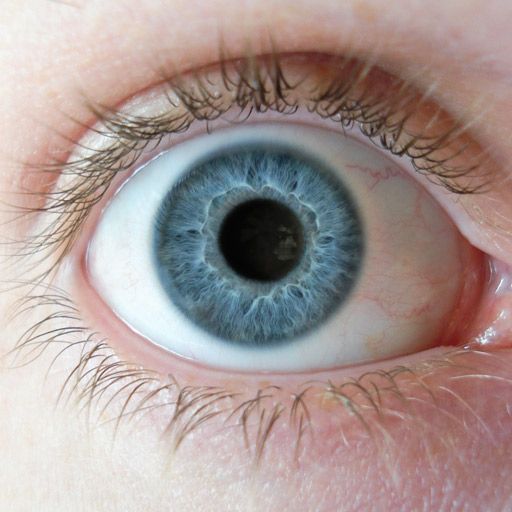The lens in the eye must be clear in order to receive a sharply focussed image. If the lens is cloudy or opaque due to the gradual formation of a cataract, the image becomes progressively blurry and visual performance is affected. Patients with early cataracts often have difficulty in appreciating colours, changes in contrast, reading, driving, recognizing faces, and glare from bright lights. These symptoms may be improved with new spectacle lenses, better lighting, anti-reflective coatings and UV protective sunglasses. If your eye care professional finds a cataract, you may not need cataract surgery for several years. You might in fact never need cataract surgery. By having your vision tested regularly, you and your eye care professional can monitor the progression and discuss the options available to you, and help you make an informed decision regarding surgical removal of the cataract by an Ophthalmologist. A typical clue for you that the cataract might be progressing, is the feeling that your spectacles are always dirty, and you find yourself constantly cleaning your spectacles. Cataract removal is never an emergency. Delaying cataract surgery will not cause long-term damage to your eye.
Signs and Symptoms
A cataract starts out small and at first has little effect on your vision. You may notice that your vision is blurred a little, like looking through a cloudy piece of glass or viewing an impressionist painting. You may notice when you drive at night that the oncoming headlights cause more glare than before. Colours may not appear as bright as they once did.
The most common symptoms of a cataract are:
- Cloudy or blurry vision.
- Colours seem faded.
- Glare. Headlights, lamps, or sunlight may appear too bright. A halo may appear around lights.
- Poor night vision.
- Double vision or multiple images in one eye.
- Frequent prescription changes in your eyeglasses or contact lenses.
- Vision that’s cloudy, blurry, foggy, or filmy.
- Nearsightedness (in older people).
- Problems with glare during the day.
- Trouble with spectacles or contact lenses not working well.
These symptoms also can be a sign of other eye problems. If you have any of these symptoms, check with your eye care professional, to be sure that the cause of the symptoms is only that of early cataract formation.
By simply changing your spectacles at this time will improve your vision, however in the future it might become necessary to refer you to an ophthalmologist to have the cataracts surgically removed.
Causes and Risks
The lens inside the eye works much like a camera lens, focusing light onto the retina for clear vision. It also adjusts the eye's focus, letting us see things clearly both up close and far away. The lens is mostly made of water and protein. The protein is arranged in a precise way that keeps the lens clear and lets light pass through it, but as we age, some of the protein may clump together and start to cloud a small area of the lens. This is a cataract, and over time, it may grow larger and cloud more of the lens, making it harder to see.
No one knows for sure why the eye's lens changes as we age, forming cataracts. But researchers worldwide have identified factors that may cause cataracts or are associated with cataract development.
Besides advancing age, cataract risk factors include:
- Ultraviolet radiation from sunlight and other sources
- Diabetes
- Hypertension
- Obesity
- Smoking
- Prolonged use of corticosteroid medications
- Statin medicines used to reduce cholesterol
- Previous eye injury or inflammation
- Previous eye surgery
- Hormone replacement therapy
- Significant alcohol consumption
- High myopia
- Family history
Stats and Incidence
Age-related cataracts are responsible for 51% of world blindness, about 20 million people. Globally, cataracts cause moderate to severe disability in 53.8 million (2004), 52.2 million of whom are in low and middle income countries.
In many countries, surgical services are inadequate, and cataracts remain the leading cause of blindness. Even where surgical services are available, low vision associated with cataracts may still be prevalent as a result of long waits for, and barriers to, surgery, such as cost, lack of information and transportation problems.
In the United States, age-related lens changes have been reported in 42% between the ages of 52 and 64, 60% between the ages 65 and 74, and 91% between the ages of 75 and 85. Cataracts affect nearly 22 million Americans age 40 and older. By age 80, more than half of all Americans have cataracts. Direct medical costs for cataract treatment are estimated at $6.8 billion annually.
In the eastern Mediterranean region, cataracts are responsible for over 51% of blindness. Access to eye care in many countries in this region is limited.
Treatment
When symptoms begin to appear, you may be able to improve your vision for a while using, new spectacles, stronger bifocals, extra magnification, appropriate lighting or other visual aids. Your eyecare practitioner is obliged to advise you if they notice that you have of early cataracts. This is often long before they start to affect you. It is common for your practitioner to detect and diagnose cataracts that only need surgical intervention 4 to 6 yrs later.
Many people consider poor vision an inevitable fact of aging, but early cataracts can affect you in your daily life. What to do about the cataracts depends largely on the particular patients’ needs. For example, if one spends a lot of time driving at night, particularly on unfamiliar roads, the need for surgical intervention will be a lot sooner than for a retired person who takes walks, reads the newspaper, and watches TV in the evenings.
One is always able to delay cataract surgery. It is never an emergency, and you are not damaging your eye by delaying the surgery. The cataracts will however continue to progress very slowly over a period of time. It is recommended to visit your eyecare practitioner annually so they are able to assess and measure the progression of the cataracts and advise you accordingly.
One need only think about surgery when your cataracts have progressed enough to seriously impair your vision and affect your daily life. It's important to understand that it is the patient who must make the decision to undergo cataract surgery. It is your eyecare practitioner’s responsibility to educate patients and give them the knowledge they need to make an independent and well-informed decision regarding cataract treatment.


